Reviews
J. Lee Thompson
USA, 1983
Credits
Review by Matt Bailey
Posted on 02 November 2011
Source Netflix Instant
Categories BRONSON!
Is there any logo in opening credits history that sets expectations more precisely than the hard-edged hexagon of Cannon Films? It’s pretty much a mark of guarantee that you’ll get a body count, a soundtrack heavy on sleazy synths, and a script that’s not going to present much of a challenge to your attention span. But you’re probably going to be pretty entertained. The golden era for Cannon Films ran from the 1979 purchase of the studio by Israeli filmmakers Menahem Golan and Yoram Globus to the massive flop in 1987 of Superman IV: The Quest for Peace. In those eight brief years, though, Cannon released about 140 films including such classic trash masterpieces as Missing in Action and its sequel Missing in Action 2: The Beginning; Breakin’ and its sequel Breakin’ 2: Electric Boogaloo; The Delta Force and its two sequels, American Ninja and its four sequels; three Death Wish sequels; The Last American Virgin; Cobra; Over the Top; Bolero; and King Solomon’s Mines. Cannon also managed a grasp at prestige with films by John Cassavetes, Andrei Konchalovsky, Neil Jordan, and Franco Zeffirelli, but low-budget action was their hash and they made (and subsequently lost) a fortune slinging it.
Given the freewheeling style of films they were famous for and the legendary Golan-Globus disdain for such notions as narrative comprehensibility and sympathetic characters, it may come as little surprise that 10 to Midnight was chosen as the title of the film well before the script was written. You have to admit, it’s a great title, and perfect for a Charles Bronson film directed by J. Lee Thompson—one of their many collaborations—in which the story is an attraction secondary to its star and genre. Even one of the poster designs for the film shows merely the title, a still of Bronson pointing his gun at the camera, and the tagline, “Bronson…is in town.” That’s literally all you needed to sell the film.
A film can’t only be a title and a poster (though many would have been better off that way), so 10 to Midnight does have a plot, such as it is: a string of cliches running from the hard-bitten veteran cop (Bronson, naturally) paired up with an idealistic, by-the-book rookie (Andrew Stevens) to the unlikely but wholly expected romance between the rookie cop and the daughter of the veteran cop (Lisa Eilbacher), culminating in a battle of wits and wills between the veteran cop and a Raskolnikovian killer (Gene Davis). But you can guess just by looking at the poster who comes out on top.
Though the basics of the plot might be shared with any number of other Bronson films, one thing does set it apart from most: the moral universe of the film has shifted to the point where each side, “good” and “bad,” believes that killing for vengeance can be justified. The killer believes he is justified in murdering a woman who has spurned his advances and treated him with contempt, and the cop believes he is justified in shooting the killer because he knows the killer will plead insanity at his trial and be found not guilty. [Sorry for the spoiler, but this is a Bronson film; you know how it ends before it even starts.] Because of this, the film seems to make a quite bold statement about abuse of the insanity plea. The film was written and shot in 1982-1983 when the murder of John Lennon, the attempted assassination of Ronald Reagan, and the insanity pleas of the assailants in both cases were still very fresh in the mind of the moviegoing audience. The public outrage over the perceived abuse of the defense in general and the acquittal of John Hinckley Jr. in particular was so extreme that it led to congressional reform of the insanity defense in 1984, so it’s no stretch to think that it found expression in popular films of the time like 10 to Midnight.
The theme of the perceived moral failure of the insanity plea is rarely noted in contemporary reviews of the film, but then it may have been so obvious at the time as to not require mention. What is often mentioned is a general tone of misogyny, as the victims of the killer are invariably young, buxom women, nude or wearing, at the most, a towel. You know one woman in particular will survive her attack not because she’s a major character but because she’s wearing clothes. But nubile, unclothed female victims had long been a staple of slasher films, so I don’t see how this film should come in for any special criticism. In fact, I think this movie is not just misogynistic, it’s misanthropic: it both objectifies and hates men and women equally. While the female victims nearly all nude, for some reason that is never explained in the film the killer stalks and attacks his victims in the nude as well, and there is actually quite a bit more of Gene Davis’ naked flesh on display, and more often, than that of any of the women in the film. It’s a startling conceit and an overdue equalization of exploitation, but at the same time it’s not exactly a milestone that anyone’s going to run around celebrating. [Though 1983 is a high watermark for male nudity in film; see A Night in Heaven, All The Right Moves, Breathless, Risky Business, Star 80, et al. Thank Porky’s and The Blue Lagoon.] And while the film is showing off all of the rippling, jiggling, undulating bodies, none of its characters has any compunction about breaking the social contract. Killers kill, lawyers concoct defenses built on lies, cops bend rules and plant evidence, and everybody comes off looking like a sleazebag. But then, that’s pretty much the appeal of this film, isn’t it?
More BRONSON!
-
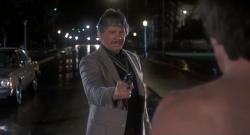
10 to Midnight
1983 -
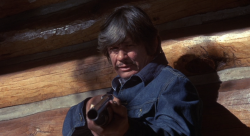
Mr. Majestyk
1974 -
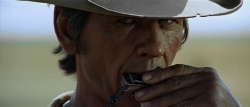
Once Upon a Time in the West
1968 -
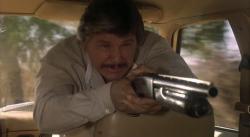
The Evil That Men Do
1984 -

Farewell, Friend
1968 -
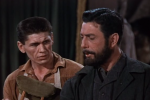
House of Wax
1953
We don’t do comments anymore, but you may contact us here or find us on Twitter or Facebook.



